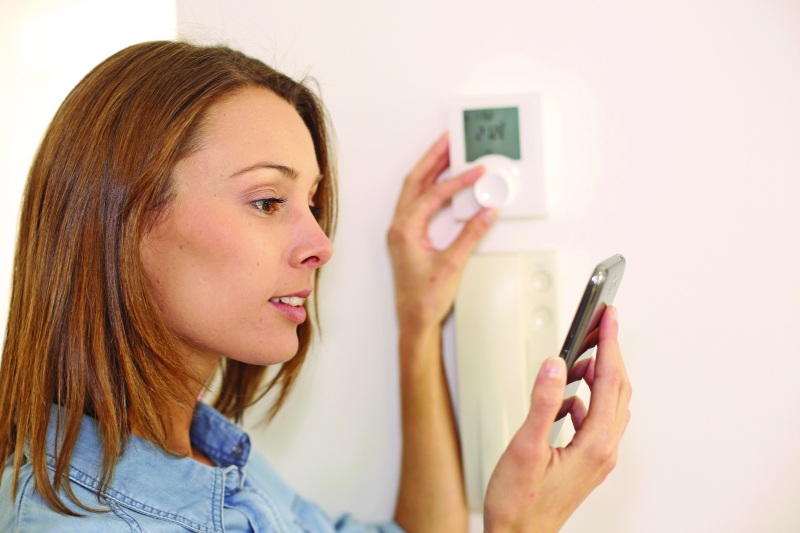What Does REME technology mean for Longview TX?
Feb 3, 2012

It’s almost Summertime, and Texas is about to turn up the HEAT. Just within the last few years, the United States in total has experienced some of the hottest summers to ever be recorded. Aside from the ecological impact that summer brings, these smoldering days are often a disaster for our wallets. Many of our East Texas homeowners will notice an increase in their electricity bills between the months of June through September due to our extensive climate.
Not to worry, we aren’t going to let you melt away in the Summer heat, just to save a few dollars. With these helpful tips from JD’s AC, you can keep the temperature and your budget within your ideal comfort zone.
1.Check your air conditioning unit
Just like you, your air conditioner needs to have routine maintenance performed to ensure the functionality and efficiency for the lifetime of your system. If neglected, your system can experience poor performance, unnecessary energy usage, or complete system failure. Certified HVAC technicians can inspect your coils, fins, evaporator cooler, heat pump, and any other parts of your air conditioning unit. Making sure that all components are in good working order, and ready to keep you cool all summer long.
2. Replace your AC filters
Keep your air filter clean, and clear of debris is one of the easiest and most effective things many homeowners can do to ensure the efficiency of your HVAC system. Clogged, dirty, unclean filters will block natural airflow, thus reducing your air conditioner’s ability to remove and absorb the heat passing through. You should replace your air conditioner’s filter every month to two months depending on your lifestyle, pets, and several other factors. For most, your filter can be found in your walls, ceilings, furnaces, or inside the air conditioner itself. In single room air conditioners, the filter will be mounted in the grill that faces into the room. In central air conditioning systems, you can find your filters along the length of your return duct.
3. Switch to LED light bulbs
Still using outdated, incandescent light bulbs? Then it’s time you switch to the next best thing, LED lights. LED lights are the most energy-efficient options on the market, using 75% less energy, last 25 times longer, and run much cooler than competing lightbulbs. While costing a little more upfront, soon they pay for themselves with energy savings.
Did you know? Incandescent light bulbs are extremely inefficient, only absorbing 10 – 15% of the electricity that gets turned into light, and the rest? Becomes wasted heat that contributes to your high energy bill.
4. Invest in a smart thermostat
Smart thermostats are Wifi enabled devices that automatically adjust to the temperature settings in your home, to provide homeowners with peak efficiency. With smart thermostats, your temperature habits and preferences are learned and established in a schedule that will automate adjust to an energy-saving temperature when you are asleep or away from home. Ideally, you will want to set your internal temperature at 78°F and avoid lowering your thermostat while the air conditioner is running. This will not cause your home to cool any faster and actually may result in higher energy usage.
Pro Tip! Avoid placing lamps, TVs, or other heat-expending equipment away from your home’s thermostat. These appliances can cause your thermostat to improperly register heat that these create, causing your AC system to run longer, and harder than what is necessary.
5. Utilize fans in your home
Running fans is more cost-effective than running your air conditioner. As a matter of fact, running your fan for 24 hours a day, 7 days a week for an entire month, would only cost around $5 extra on your electricity bill. While they do not produce cold air, they will help to circulate air within that room. This airflow will create a ‘wind-chill effect, that helps with comfortability while making no changes to the internal temperature of your home.
But they do work well together! By using a ceiling fan, you can set your thermostat 4°F higher with no reduction in comfort. Remember: To turn off your fans when you are no longer in the room, or not home. With nobody to feel the effects of the ceiling gan, you aren’t doing much outside of using unnecessary energy.
6. Keep the blinds closed
Keeping your blinds closed or drapes pulled through the daytime will help reduce the greenhouse effect of the sun. In many homes, the southern, and western facing walls absorb the brunt of the sun’s heat. While north-facing windows will produce little glare, and a fair amount of natural light, without the summer heat beaming inside. Leave these windows open if natural light is desired, vs your southern or western facing windows.
7. Look into an energy-efficient dehumidifier
In hot, humid climates such as those here in East Texas, a dehumidifier is a perfect partner for your air conditioning system and a great way to reduce the overall humidity levels in your home (and your energy bill expenses too). This is because when the air in your home is too humid, the air conditioning unit will work twice as hard to not only cool the air but to remove the moisture as well. By installing a dehumidifier you can expect to reap the benefits of:
- A lower energy bill
- Less humidity inside your home
- A more comfortable experience
8. Avoid kitchen cooking as much as possible
Yes, you read that correctly! Cooking with a conventional oven will add unwanted heat to your home, thus causing your AC system to work twice as hard. Instead, you can utilize alternative kitchen appliances such as; microwaves, slow cookers, or even outdoor appliances such as grills, or smokers. What better time, than summertime for a backyard BBQ? Cook delicious lunches and dinners, while keeping the summer heat outside.
9. Wash your clothes in cold water
Did you know that your washing machine, dryers, and dishwasher all generate large amounts of heat. To reduce the amount of heat being used, JD’S AC recommends running these appliances with cold water, running full loads of dishes and clothing when in use.
Pro Tip! According to the U.S. Department of Energy, water heating can account for 14-25% of your total energy usage. By turning your water heater down to a warm setting of 120°F can save you money every month!
10. If you aren’t using it, lose it!
Time to unplug, and save! While electronics are great and have made our lives easier in so many ways, they too generate not only heat but electricity as well. Even when turned off, the phantom energy is still being pulled, and small amounts of heat are being generated through the wiring. When you add it up, reducing this usage can make a few degree difference in the overall temperature of your home.
11. Make sure that your home is properly sealed.
Insulation is a key factor for your home, that doesn’t just apply to you during the winter months. Preventing air leaks within your home is one of the best ways not only to keep the warm summer air out but also to keep the cool air from your HVAC system inside. By adding caulking, and weather stripping you can save an average of up to 30% on your heating and cooling costs. Insulating your home doesn’t have to cost an arm and a leg either! But it sure can save you a fair amount of cash.
Pro tip! Check your attic and basement for air leaks, as these are areas prone to large gapping in the insulation, or missing weather stipping all together.
Are you ready to start saving on your energy bill all while keeping it cool?
No matter the season, summer or winter, many of these tips will help you save money all year long. And by creating smart energy habits, you will reduce overall energy efficiency while keeping cash in your pocket year-round
